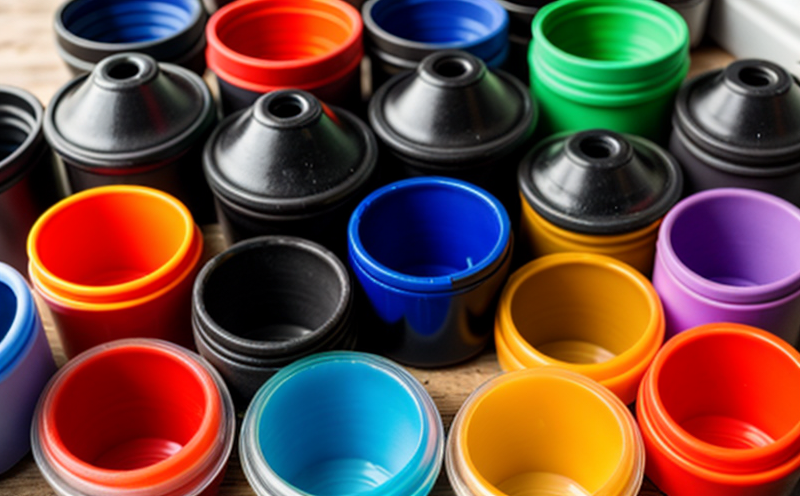ANSI BIFMA X7.1 VOC Emission Testing of Recycled Plastic Furniture
The ANSI/BIFMA X7.1 standard sets out stringent requirements for the testing and verification of volatile organic compound (VOC) emissions from indoor products, particularly furniture. For recycled plastics used in this context, compliance with BIFMA X7.1 is crucial to ensure that products do not contribute harmful VOCs to indoor air quality.
Recycled plastic furniture presents a unique challenge because the materials are derived from post-consumer or industrial waste streams. This recycling process can introduce variability in chemical composition and physical properties, affecting the release of VOCs. Therefore, rigorous testing is essential to ensure that recycled plastics meet strict environmental standards without compromising product performance.
The BIFMA X7.1 standard defines the measurement methods for volatile organic compounds emitted from solid wood or plastic furniture, including those made with recycled materials. The test involves placing a specimen of the product in an airtight chamber and measuring the concentration of VOCs over time. This process allows for the detection of harmful chemicals that could off-gas into indoor environments.
For recycled plastics, the testing protocol must account for factors such as the type of plastic used, its age, and any additives or fillers present. The standard also considers the potential for chemical reactions during the recycling process, which can lead to the formation of new compounds that may emit VOCs.
The results of this test are critical for several reasons. First, they provide assurance that recycled plastic furniture does not pose a risk to human health and indoor air quality. Second, compliance with BIFMA X7.1 can enhance a company's reputation as an environmentally responsible manufacturer. Finally, these tests support the development of safer, more sustainable products.
In addition to VOC emissions testing, other relevant standards such as ISO 16000-9 and EN 438 also address indoor air quality issues related to furniture materials. These standards provide additional context for understanding the broader impact of recycled plastics on indoor environments.
Applied Standards
| Standard | Description |
|---|---|
| ANSI/BIFMA X7.1 | Defines the measurement methods for volatile organic compounds emitted from solid wood or plastic furniture, including those made with recycled materials. |
| ISO 16000-9 | Provides a framework for the measurement of volatile organic compounds in indoor air quality. |
| EN 438 | Establishes requirements for the evaluation and measurement of volatile organic compounds in indoor environments. |
Quality and Reliability Assurance
The process of ANSI/BIFMA X7.1 VOC emission testing involves several key steps to ensure accurate and reliable results. Specimens are carefully selected based on their composition and expected emissions, ensuring that the test reflects real-world conditions as closely as possible.
Once specimens are prepared, they are placed in a climate-controlled chamber where the temperature and humidity can be precisely controlled. This environment mimics typical indoor conditions to provide accurate results. Over time, continuous air sampling is conducted using specialized equipment capable of detecting even trace amounts of VOCs.
The data collected during these tests are analyzed using advanced analytical techniques such as gas chromatography/mass spectrometry (GC/MS). These methods allow for the identification and quantification of specific VOC compounds, providing detailed insights into their presence and concentration levels. The results are then compared against established thresholds defined by BIFMA X7.1 to determine compliance.
Quality assurance is maintained through regular calibration of equipment, training of personnel, and adherence to strict protocols throughout the testing process. This ensures that all tests meet high standards of accuracy and repeatability, allowing for consistent and reliable results.
Competitive Advantage and Market Impact
Compliance with ANSI/BIFMA X7.1 is not only a regulatory requirement but also a strategic advantage in the competitive market of recycled plastic furniture. By ensuring that products meet or exceed these stringent standards, manufacturers can build trust with consumers who are increasingly concerned about indoor air quality and environmental sustainability.
Companies that demonstrate leadership in this area may benefit from enhanced brand reputation and increased customer loyalty. In a marketplace where eco-friendly options are gaining popularity, adherence to such standards can set companies apart from competitors and attract environmentally conscious buyers.
Moreover, meeting these standards can open up new market opportunities in regions with strict environmental regulations or certification programs that require compliance for entry into certain markets.
The testing process itself also contributes significantly to product development by providing valuable data on the performance of different recycled plastic materials. This information can guide future iterations of products aimed at improving both sustainability and indoor air quality.





